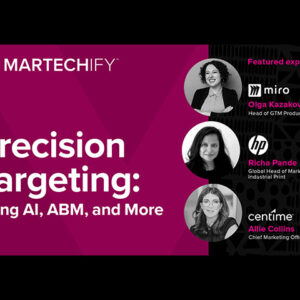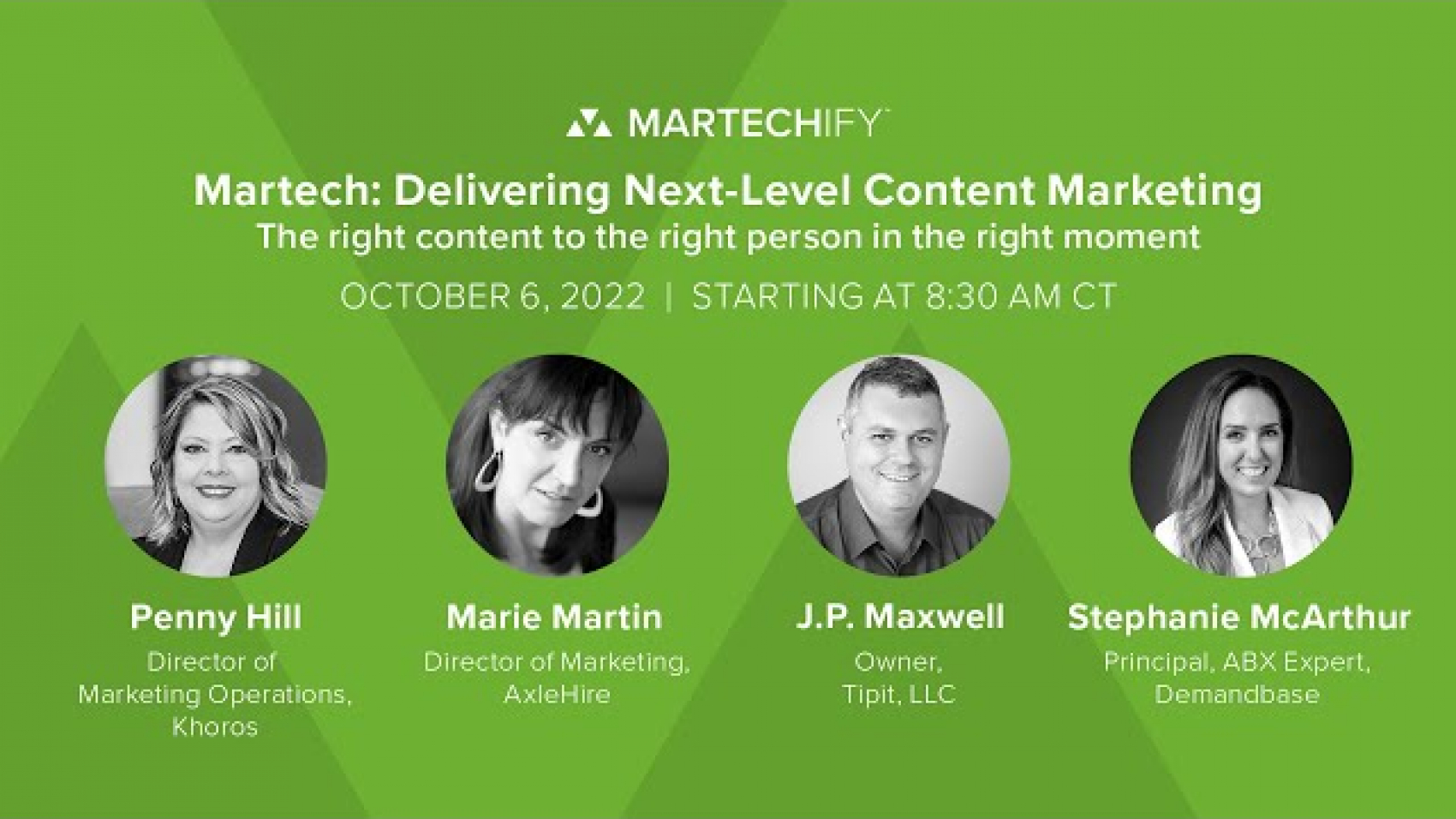VIRTUAL SESSION
Precision Targeting: Using AI, ABM, and More
Whether you’re marketing to business buyers or consumers, targeting the right person with the right message takes work. The good news is that making AI a member of your ABM team can greatly improve your chances of success.
Join our live panel discussion to hear experts discuss how to use AI with your martech for data-driven targeting and customized experiences. Learn how to create next-level account and customer journeys.
Upcoming Session
October
Virtual Session
AI + ABM: Taking Your Marketing Transformation to the Next Level
Register for this event and become a Martechify member. You’ll enjoy automatic event registration, first access to new content and opportunities to share your expertise with the community!
Deep dive session
Do you and your marketing team want to discuss a topic in greater detail with us? Ask us about setting up a custom deep dive session, where we bring in experts to discuss a topic of your choosing. You can request a custom deep dive below:
Resources
Martech is a work in progress, constantly evolving to meet user and customer demands. We’ve put together some informative resources to help you navigate the shifting new technological landscape with confidence.















